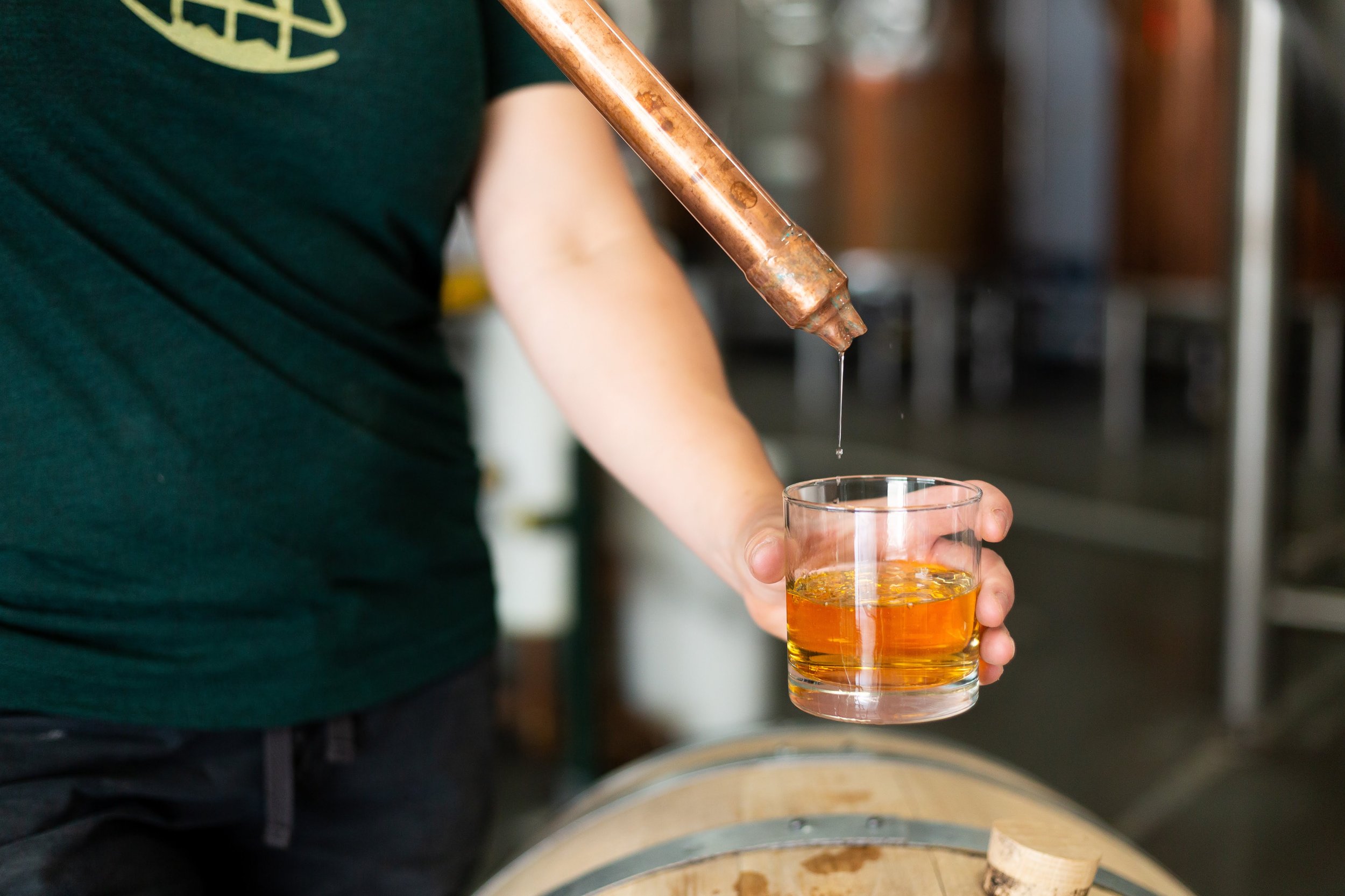What makes a Whiskey a Whiskey and how to become an expert taster
By definition, a whiskey is any spirit distilled from grain that has been aged in an Oak barrel. The amount of time spent in a barrel is up to the distiller and the type of grain used determines what type of whiskey is being made. Whiskey is a broad term for all of the possibilities ie. Bourbon, Single Malt, Rye, etc. All Bourbon is Whiskey but not all Whiskey is Bourbon, for example.
To be called “Bourbon,” a whiskey must be made from at least 51% corn, aged in New American Oak Barrels and produced in the USA.
Scotch and American Single Malt whiskeys are similar in that they both need to be made from 100% malted barley. The way they differ is how they are aged and where they come from. Scotch whiskey is produced in Scotland and aged in Used Oak Barrels. The old barrels plus the constant cool, damp climate make for a long aging time. American Single Malt whiskey is produced in America and aged in New Charred Oak Barrels, typically having a shorter aging period. As a result the two products are very different.
A Peated Single Malt Whiskey means that a portion or all of the malted barley has had peat moss burnt underneath it and had the smoke rise through the bed of grain creating that distinct smokey flavor.
Irish whiskey is also made from barley, but portions of it use unmalted grain. It also has a different three step distillation process that makes Irish whiskey unique from other single malts.
Rye whiskey and wheat whiskey, much like Bourbon, must contain 51% or more rye or wheat. Rye grain provides a very distinct grassy and peppery taste.
Tasting Whiskey
Learning to taste whiskey is the best part of the process.
The three things to note during a tasting are smell, taste and mouthfeel or finish. When nosing a whiskey it is good to breathe through your nose and mouth at the same time. This helps to cut out the harsh ethanol smell so that the grain properties shine through.
Once you have nosed the whiskey to your heart's content, it is time to taste it! Always start with a small sip to get your pallet acclimated. After this, I recommend the technique called the Charleston chew. To do this, take a sip of whiskey and simply hold it in your mouth and start to chew it like you would chew a piece of gum. This will coat your entire palate hitting all your flavor receptors. As you swallow, take note of how the whiskey feels in your mouth. Does it dry you out? Does it coat your tongue? Does it linger on the pallet? This is mouthfeel and finish.
Once you have gone through this process it is always nice to add a few drops of water to your sample and repeat the whole process again. Adding water helps cut that ethanol even more to make all the other flavors and aromas come to the surface. Just a few drops can alter your tasting experience entirely.

